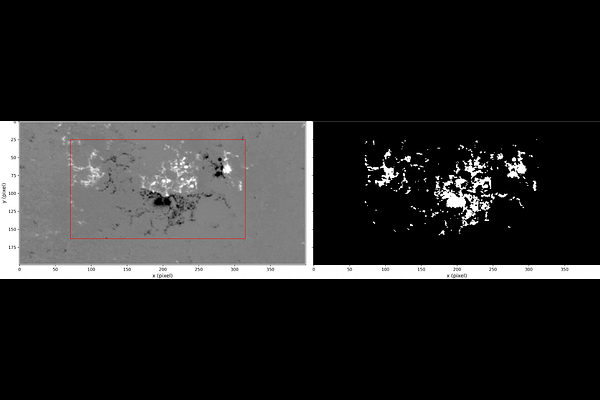Magnetic Field Variability as a Consistent Predictor of Solar Flares

Magnetic Field Variability as a Consistent Predictor of Solar Flares
Kara L. Kniezewski, Emily I. Mason, Daniel J. Emmons, Kyle E. Fitch, Seth H. Garland
AbstractSolar flares are intense bursts of electromagnetic radiation, which occur due to a rapid destabilization and reconnection of the magnetic field. While pre-flare signatures and trends have been investigated from magnetic observations prior to flares for decades, analysis which characterizes the variability of the magnetic field in the hours prior to flare onset has not been included in the literature. Here, the 3D magnetic field is modeled using a Non-Linear Force Free Field extrapolation for 6 hours before and 1 hour after 18 on-disk solar flares and flare quiet windows for each active region. Parameters are calculated directly from the magnetic field from two field isolation methods: the "Active Region Field", which isolates field lines where the photospheric field magnitude is $\geq$ 200 Gauss, and the "High Current Region", which isolates field lines in the 3D field where the current, non-potential field, twist, and shear exceed pre-defined thresholds. For this small pool of clean events, there is a significant increase in variation starting 2-4 hours before flare onset for the current, twist, shear, and free energy, and the variation continues to increase through the flare start time. The current, twist, shear, and free energy are also significantly stronger through the lower corona, and their separation from flare quiet height curves scales with flare strength. Methods are proposed to combine variation of the magnetic fields with variation of other data products prior to flare onset, suggesting a new potential flare prediction capability.